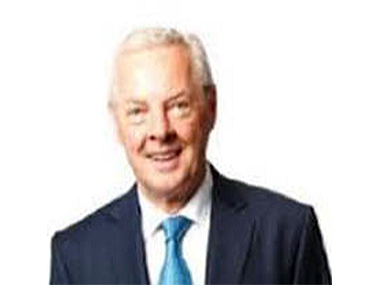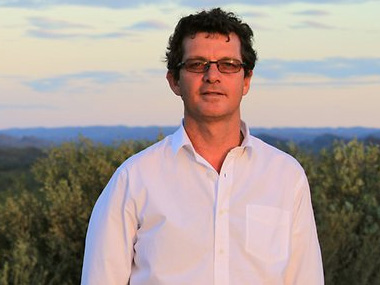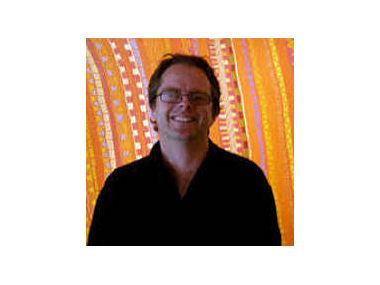The Politics of Art in Darwin

Indigenous Art Code Chair, Richard England - sending out invoices
Posted by Jeremy Eccles | 16.08.18
One of the factors that makes Darwin such a dynamic place to be during the August week of the Telstra NATSIAAs is that so many of Indigenous art's key players gather there, to top up on the art and artists who make it all worth while.
So, news that I can bring you slightly ahead of various games concerns invoices that are about to go out from the Indigenous Art Code (IaC), the Federal Government's plans for the coded protection of works from art centres, and the arrival of what amounts to a 12 month-long art fair in Darwin.
Word had got to me that the IaC was beginning to charge for membership on an annual basis. We've always known that government support for this body was finite – though, logically, it's a pretty cheap way of introducing some sense of ethics into the commercial side of Indigenous art. And could easily be seen as a government responsibility by more open-hearted politicians.
But, a couple of years ago, according to Richard England, Chair of the Code, the Feds put a 5-year limit on funding, forcing his board to start thinking of ways to finance the tiny organisation. I note that Supporters include the lawyers Allens, Wesfarmers, Rio Tinto and Qantas, and the IaC has applied for charitable status to further encourage more such corporate and other generosity. And for that side of the business, according to the IaC's website, England himself has a useful background : “He's a former partner in Ernst and Young where he specialised in insolvency and debt reconstruction”.
So it shouldn't come as too great a shock to the IaC's 117 dealer members – commercial dealers and community art centres - and its 21 Supporters that they'll be getting a bill for the rather odd amount of $168.22 when their annual membership renewal comes up. They'll also be getting this slightly threatening note:
“Directors request that you complete this form to assist the Directors in determining whether you meet any eligibility criteria for dealer membership and whether your conduct is likely to be consistent with the purposes and requirements of the Code. Your answers to the questions in this form will be reviewed by the Directors of the IaC”.
Could membership be denied on the basis of their answers? Or will they choose not to renew and pay up? The administration of this new impost will require an additional part-time staffer.
Richard England's other news was his pursuit of an Indigenous co-Chair to share his burden. Chances are, I suspect, the appointment will come from one of the existing appointed Indigenous board members – the artists Banduk Marika, Regina Wilson or Bindi Cole.
Back in June, I passed on news from the Federal Arts Ministry that it was funding a new digital code project at three desert art centres (unnamed so far) which was going to increase transparency in the Aboriginal art market. Enquiries at the Desart stand at the Darwin Aboriginal Art Fair elicited the news (that's not yet made it to the Desart website) that the project involves a QR Code imprinted on (the back of) paintings. Prof Wiki tells me what this is:
“QR code (abbreviated from Quick Response Code) is the trademark for a type of matrix or two-dimensional barcode first designed in 1994 for the automotive industry in Japan. A barcode is a machine-readable optical label that contains information about the item to which it is attached. The Quick Response (QR code) system became popular outside the automotive industry due to its fast readability and greater storage capacity compared to standard linear barcodes. Applications include product tracking, item identification, time tracking, document management, and general marketing”.
And embedded into each painting's code will be its authenticity certificate, its story, the artist's CV, and even, possibly, film of the artist talking.
Sounds good – though, as I commented in June, this doesn't even attempt to deal with fake artefacts from Indonesia, etc that are the subject of a current Senate enquiry, and it won't help that side of the market where artists deal directly with commercial galleries.
For the benefits of that sort of relationship can be seen in Darwin's renewed Karen Brown Gallery. Brown's long relationships with artists in communities without art centres at the time – Lajamanu, Ngukurr, Peppiminarti, Darwin itself - allows her now to offer historic art that would normally only be found on the secondary market. Works by such icons as Prince of Wales, Angelina George, Stewart Hoosen and Lorna Fencer before they were famous or fully developed have emerged challengingly from her archive.
And so to Provenance. Not a French restaurant, but a new gallery in Darwin replacing the long-lived and lovely Framed Gallery. It was established by Darwin's closest remote art centre – Injalak from Oenpelli – with external funding only enough to re-shape the building at Stuart Park on the way to the airport. But it's not like Sydney's APY Collective Gallery in Sydney or the former Maningrida Gallery in Darwin, dedicated to a single art centre or restricted group. So far, 15 other art centres have signed up to supply what might be best described as “art fair works” - ie not their finest canvases. Felicity Wright, the Injalak figure behind the project, says she wants to add South Australian and Queensland art centres to the list.
Currently on show is plenty of material art, which seemed the major appeal to shoppers, who may have been stimulated by that increasingly ubiquitous aspects of art fairs – the DAAF Fashion Show. Plenty of prints, some food (or was it cosmetics?) from Groote Eylandt and the odd lesser canvas. But then there's a space devoted to a fine art 'show' – and, ubiquitously, it was yet another aspect of the Buku Tsunami which had hit us in the NATSIA Awards. For not only had the NT Museum & Art Gallery brought us 'Midawarr', the fruits of the vegetal cooperation between Mulkun Wirrpanda and John Wolsley, and the newly expanded Salon organisation was featuring two solo shows by Buku Larrnggay artists – Wirrpanda again, moving on to shellfish, and Barayuwa Mununggurr continuing his visual reportage on the sacred whale, Mirinyungu – but Provenance was featuring serious barks and poles featuring Djirrirra Wunungmurra's yams! Can one have too much of a good thing???
Also, I have to say that the separation between this fine art and the rest at Provenance wasn't really sufficient to distinguish the two. Maybe they should expand the perpetual, accessible art fair and not challenge the commercial galleries. For it is worth asking the question in this time of diminishing gallery numbers whether expanding direct sales through art centres' increasingly sophisticated online efforts and these two new shopfronts in Sydney and Darwin is really going to grow the market or just drive more ethical dealers to the wall?
URL: https://indigenousartcode.org/
Share this:
»  del.icio.us
»
del.icio.us
»  Digg it
»
Digg it
»  reddit
»
reddit
»  Google
»
Google
»  StumbleUpon
»
StumbleUpon
»  Technorati
»
Technorati
»  Facebook
Facebook
Contact Details

Desart's CEO, Philip Watkins - implementing secure coding on artworks

Paul Johnstone - co-founder of the Salon des Refuses in Darwin, expanded to six different exhibitions this year.
Further Research
Artists: Angelina George | Banduk Marika | Barayuwa Mununggurr | Bindi Cole | Djirrirra Wunungmurra | Lorna Fencer | Mulkun Wirrpanda | Prince Of Wales | Regina Wilson | Stewart Hoosen
News Tags: Buku Tsunami | Darwin Aboriginal Art Fair | Desart | Felicity Wright | Indigenous Art Code | Jeremy Eccles | Karen Brown | Paul Johnstone | Philip Watkins | Provenance Gallery | QR Code | Richard England | Telstra NATSIAA
News Categories: Art Fair | Art Prize | Australia | Blog | Event | Exhibition | Feature | Industry | News
Exhibition Archive
- 16.08.18 | The Politics of Art in Darwin
- 01.08.18 | A SENSE OF PLACE
- 29.06.18 | INTERNATIONAL ACTIVITY
- 24.06.18 | Blak Markets Back in Sydney
- 22.06.18 | “I am the old and the new”
- 08.06.18 | WARS & MASSACRES
- 03.06.18 | NY “Goes Ballistic” over Aboriginal Art
- 24.05.18 | THE LOCKHART BRAND IS BUOYED UP
- 03.05.18 | THE WYNNE'S A WINNER AGAIN
- 02.05.18 | NATSIAA FINALISTS ANNOUNCED
- 07.04.18 | ENGLAND'S EMILY?
- 04.04.18 | THE SONGKEEPERS
- 19.03.18 | ON GADI COUNTRY
- 16.03.18 | SPECIAL REQUEST
- 20.02.18 | Gapu-Monuk – Saltwater Barks
Advertising

